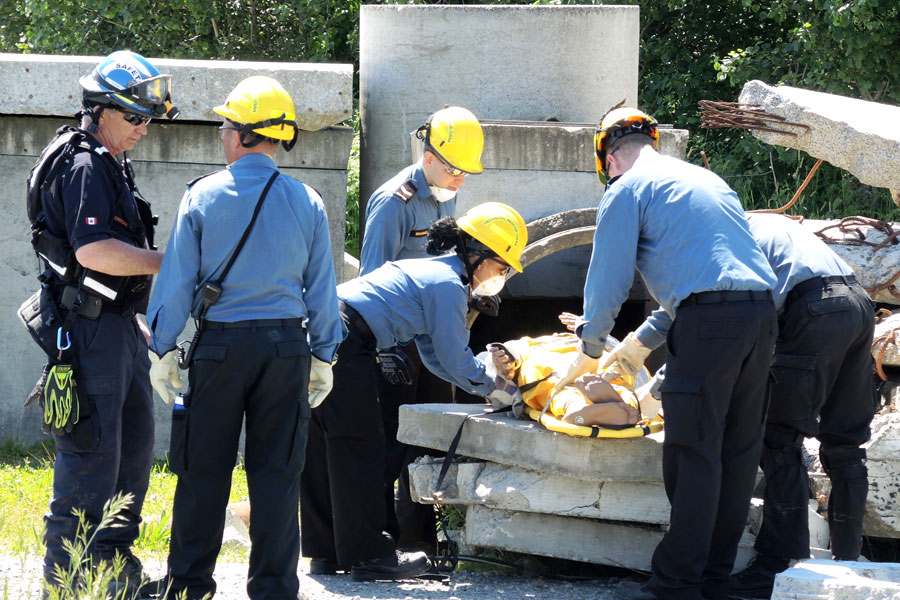Urban rescue program expands to include ships’ crews
By Lookout on Jun 08, 2017 with Comments 1

HMCS Calgary crewmembers practice evacuating a casualty under the supervision of a CFB Esquimalt USAR team instructor.
Will Chaster, MARPAC PA Office ~
Urban search and rescue has now expanded to include Royal Canadian Navy sailors through the launch of a new training program.
The HMC Ship Disaster Response Course trains sailors on light urban rescue to enable them to assist in a disaster, such as the 2016 New Zealand earthquake.
The first to trial the program was 110 crewmembers from HMCS Calgary, which is currently in refit. They spent three days at Work Point’s search and rescue training area from May 23 to 26.
Under the guidance of 12 trainers from the CFB Esquimalt Urban Search and Rescue (USAR) team, sailors worked through multiple stations that simulated a disaster zone. This involved working together in teams in order to shore up structures and extract casualties from under debris.
“This course is designed around the equipment that all ships embark while on deployment,” says Petty Officer First Class Chance Sheffield, Operations Chief of CFB Esquimalt’s USAR team. “Medium and heavy USAR teams require specialized gear and training, so we’re drilling the crew in non-structural ‘light’ USAR techniques based on the equipment they will have at their disposal.”
Ships carry rappelling gear, medical equipment such as spine boards, and basic tools, but lack the specialized kit of dedicated heavy and medium USAR teams. These include heavy duty saws for cutting through thick concrete blocks and advanced lifting equipment such as air bag systems for raising heavy pieces of debris.
“The first part of the training focused on recognizing damage to structures and advanced first aid techniques, while further training concentrated on working together as a team in disaster situations. This had a special eye towards interoperability with other nations in the event of an incident in a foreign country,” says PO1 Sheffield.
This course is a modified version of CFB Esquimalt’s USAR disaster response plan.
“Regular base LUSAR course involves about 30 people, so we altered this one to accommodate the large size of Calgary’s crew. We also added some components to give the training more realism such as ‘victims’ suffering from shock and other things you would expect to find in a disaster zone,” said Chief Petty Officer Second Class Mike Lesperance, Logistics Chief of the USAR Team.
PO1 Sheffield’s ultimate goal is to have the crew of each ship take part in a LUSAR training session while their ship is in refit. As more crews participate in this exercise and as members are posted to different units, this LUSAR training will disseminate throughout the navy.
“There are only a few USAR teams in Canada and our team at CFB Esquimalt is the centre of excellence for the navy in this regard. The more people we have trained here in Esquimalt, the better,” he says.
Filed Under: Top Stories
About the Author:






I think the coastguard could be of some help as well train us